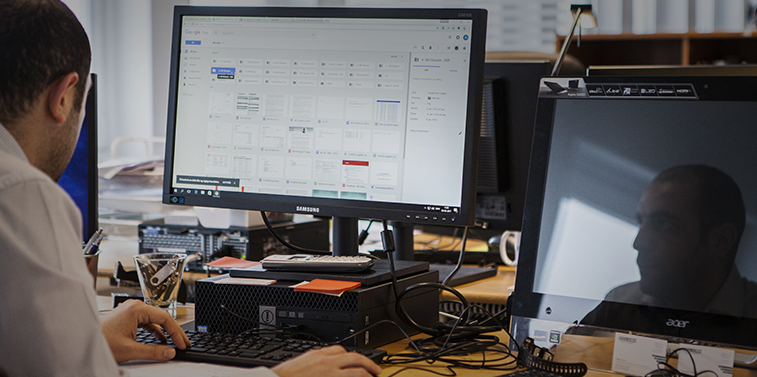-
ENTERPRISE UX
UX DESIGN
Handling Complex Use Cases While Designing UX for Enterprise Applications

A UX design company is well-tuned to defining use cases that an Enterprise UX application must satisfy in order to be acknowledged for its effectiveness and efficiency. These applications often work in collaboration with multiple modules of the same product or with different products introduced in its ecosystem. These combinations permute and combine different sets of possibilities and use cases that may reflect on how the user might use an application.
The naive process of designing use cases is too straightforward and the enterprise applications as we know, too complex. Designing use cases is apparently one of the most basic yet important activities of enterprise application development.
Having an initial thought about what a business user seeks in an enterprise system is a good idea, although the goal is not to find out all the use cases, it is still important to find out the few fundamental ones which are meaningful to the user. Also for a complex system, considering the platforms, types of users, stakeholder requirements, entities involved and scope & goals of the system is useful. At a later stage of the process, we have to test the earlier designed test cases in order to check whether or not user goals are satisfied.
Product Managers & Complex Use Case Scenarios

It is popularly believed that use cases are deeply involved with design solutions, and not with the overall product development cycle. Use cases should be built to test the potential and capabilities of a product in all aspects.
The best approach to build complex use cases is to
- Understand and define the capabilities of your technical infrastructure.
- Understand your user’s real-world working situation and conditions.
- Define an efficient UX design strategy to work with stakeholders and build use cases.
- Uncover different people, systems, and functions that your system is dependent on to perform.
- Focus on the significant tasks that your system performs and build the cases around them.
- Start by asking the basic questions and then lead to the more complex ones.
- Prioritize which ones are key performance indicators versus others that are nice to have.
You could build process maps, use case diagrams, or charts to visually replicate the flow of information, and build use cases that can be validated against the solutions worked upon by the design and development teams.
Keep in mind that designing use cases should be driven by the users, their goals, and those of the business.
As an Enterprise UX design company, we have often come across complex use cases and drafted solutions to address them holistically.

On one such occasion, we were working on an EMR for our client.
Their requirements demanded that ‘the integrated EMR should take care of all activities and functions performed in an enterprise healthcare facility’. This referred to all tasks across all departments performed in a hospital ecosystem. While catering to different departments, such as Emergency Rooms, Operation Theaters, Admissions, Bed Management, etc. we arrived at an exhaustive list of user roles who are expected to interact with the system –
- Admin Staff
- Doctors
- Nurses
- Pharmacists
- Vendors
- Finance, and more
Formulating use cases for such a system wouldn’t be possible without a proper approach. We interviewed the involved stakeholders to learn more and more about the work they do and how it is done. We began by building flow diagrams for smaller functions and led them to see the macro-level changes. This helped us outline the key areas and workflows that defined success for the user. These parameters were later reintroduced to validate the solutions built by our Enterprise UX team.
Closing Thought
It is important to keep in mind that while building complex use cases, one must focus on the 90 percent scenario of what is intended and how it is to be done rather than focusing on remote edge cases and majorly influencing the direction of the solution based on it. This will help you and the team remain focused and build a solution that is adaptable and appreciated by a larger audience.
While building complex use cases, focus on the 90 percent scenario of what is intended and how it is to be done rather than focusing on remote edge cases and majorly influencing the direction of the solution based on it.
More Resources:
Top 6 Ideas on Getting the Right UX for Enterprise Mobile Apps
UI Design Trends 2021: What’s Working in Enterprise App Designs







